Abstract
Although laboratory study of human behavior seems an obvious vehicle for strengthening the scientific base of behavior analysis, the place of the human subject within the operant laboratory remains problematic. The prevailing research strategy has been to link principles developed with animals to human affairs, either through interpretation of naturally occurring human behaviors or through application of the principles to the solution of human problems. The paucity of laboratory research on human operant behavior derives from several misconceptions: the possibility that experimental demand characteristics and pre-experimental behavioral dispositions of human subjects contaminate the results; that ethical considerations place undue constraint on research topics and experimental designs; and that uncontrollable variation in subjects' histories and other relevant personal characteristics prevents observation of reliable functional relations. We argue that these problems do not pose insurmountable obstacles to the experimental analysis of human behavior; that adequate methods of control and analysis are available; and that operant techniques, by emphasizing experimentally imposed contingencies, are well suited for the laboratory study of human behavior.
Full text
PDF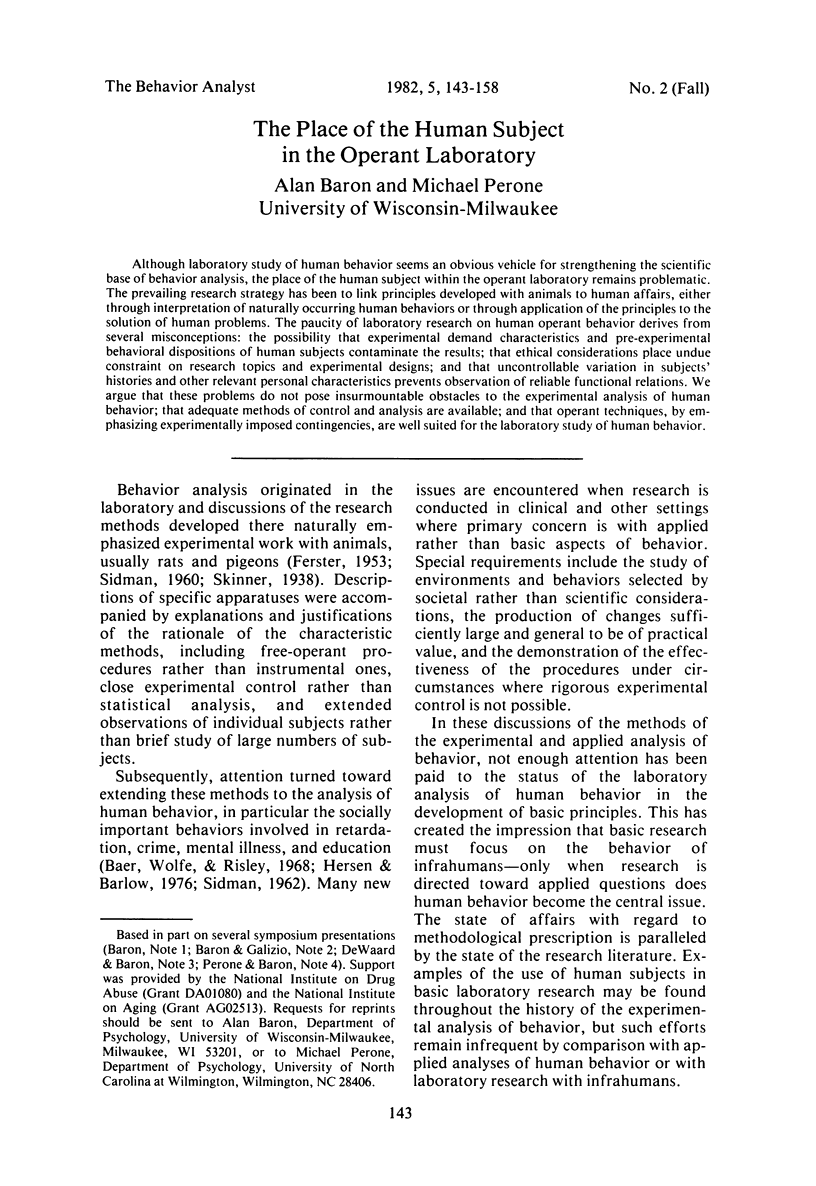
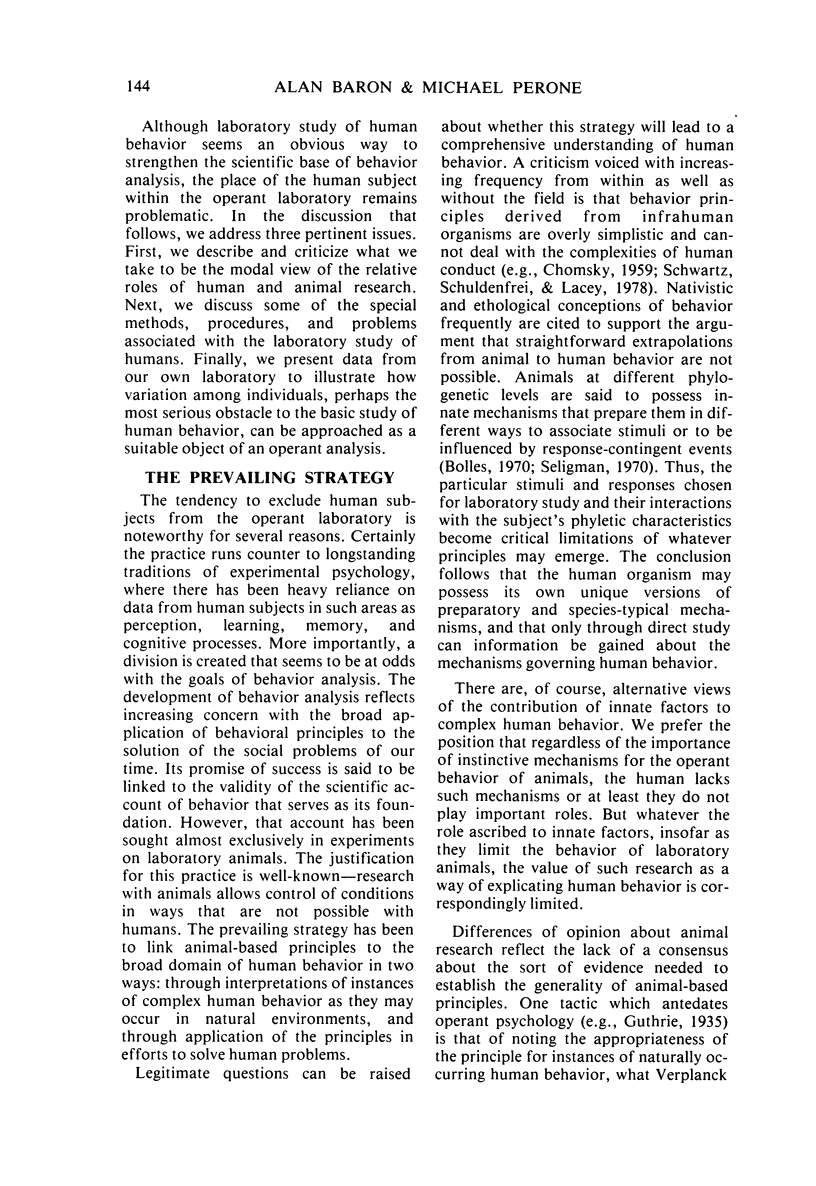

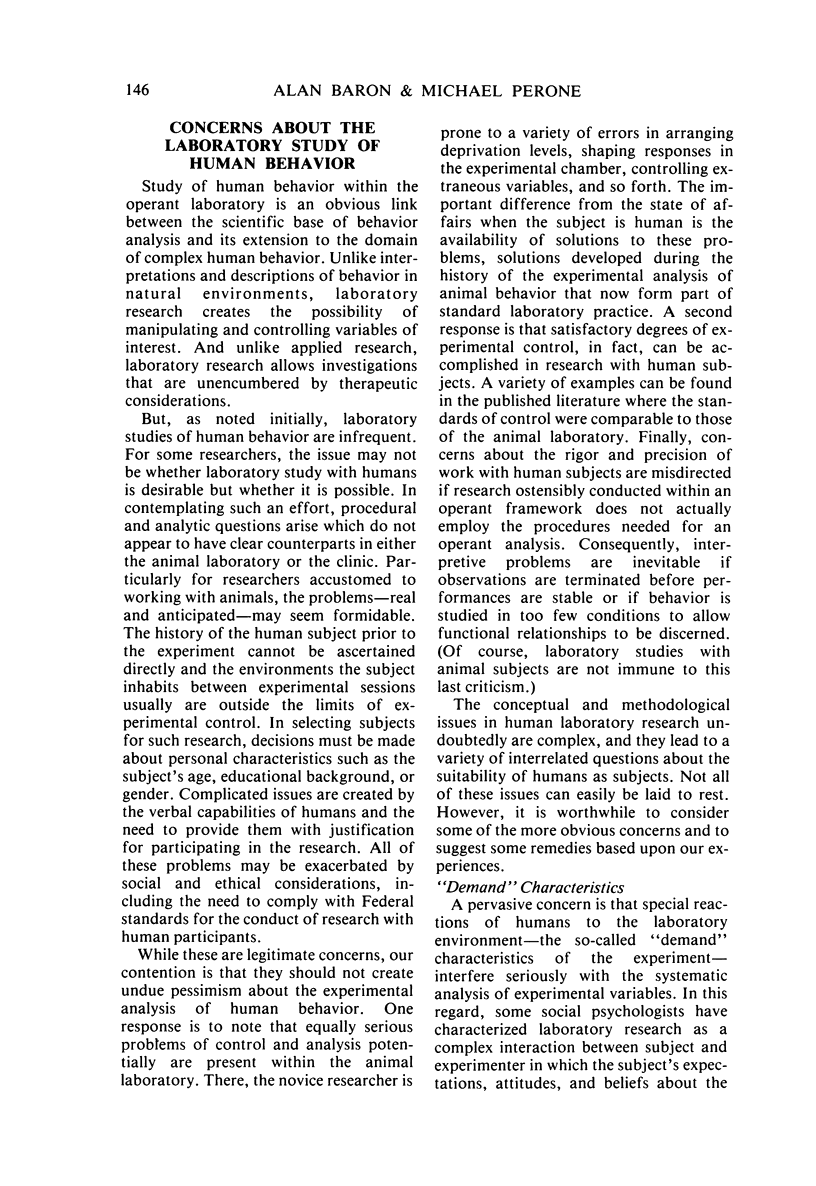
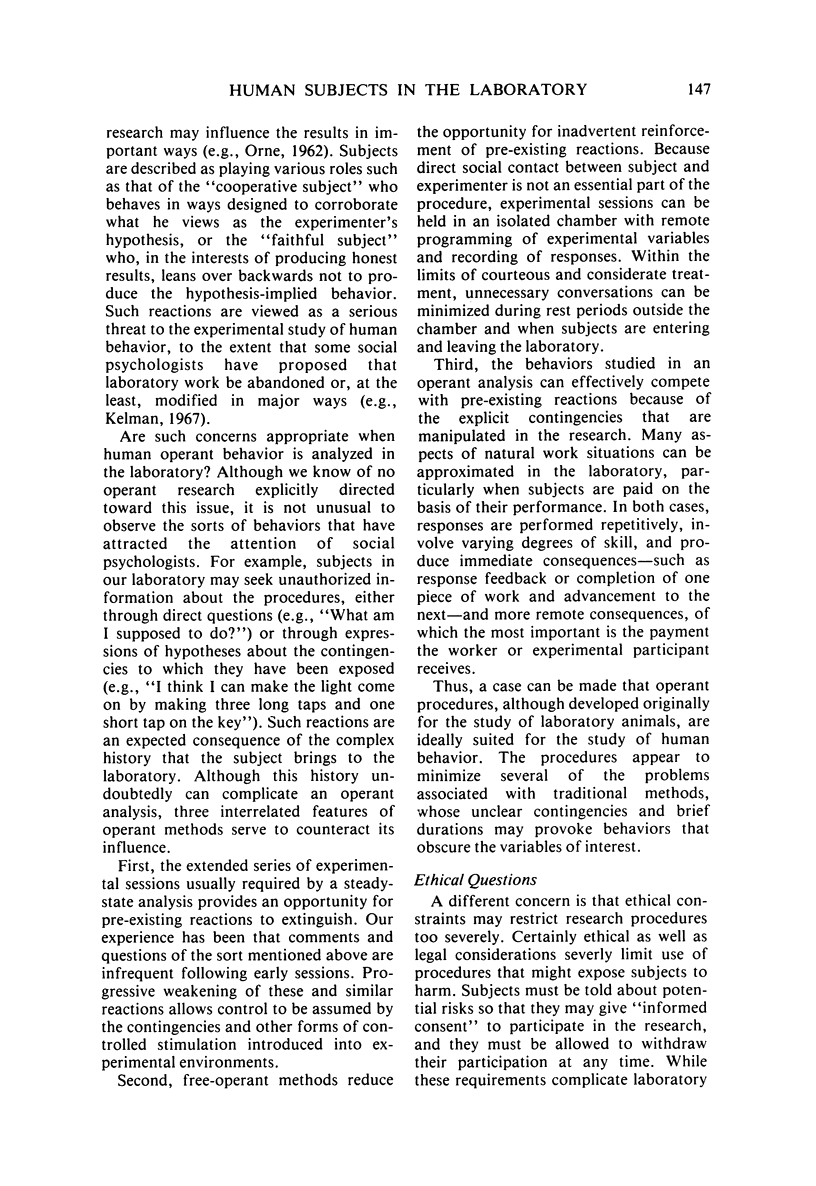
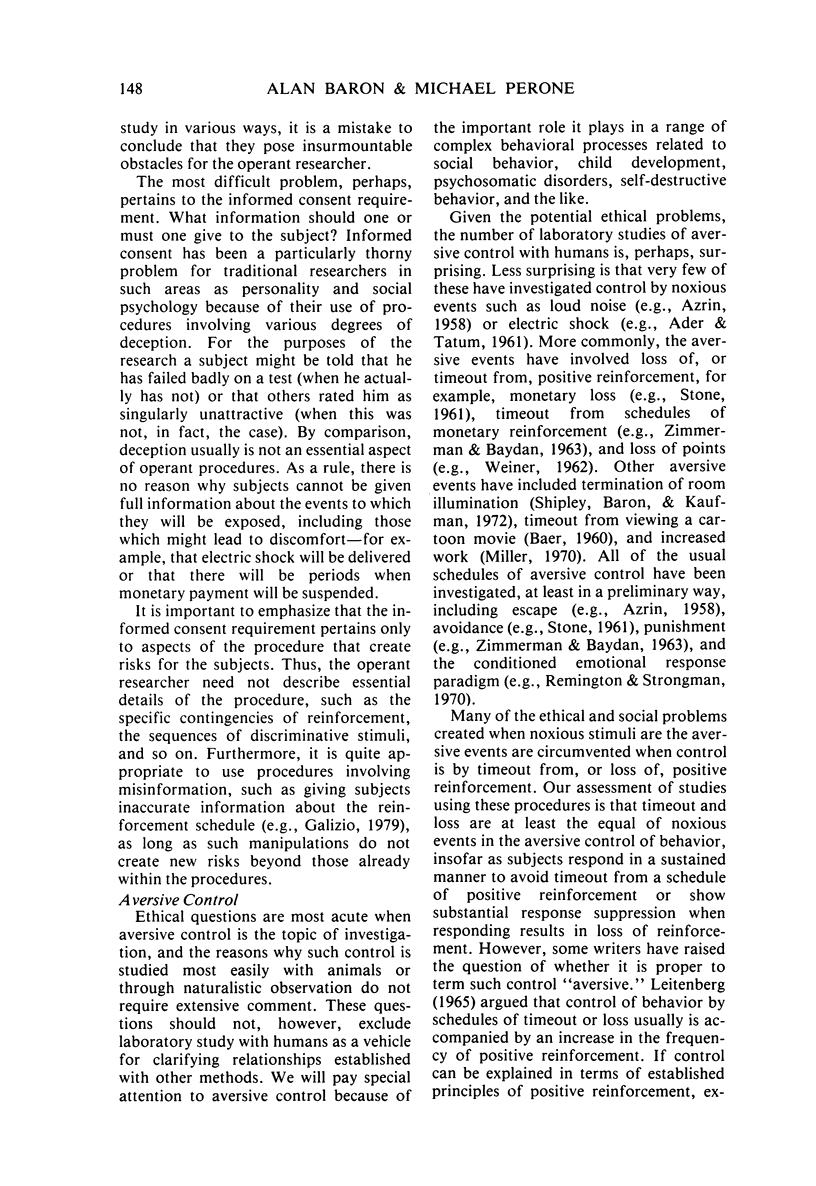
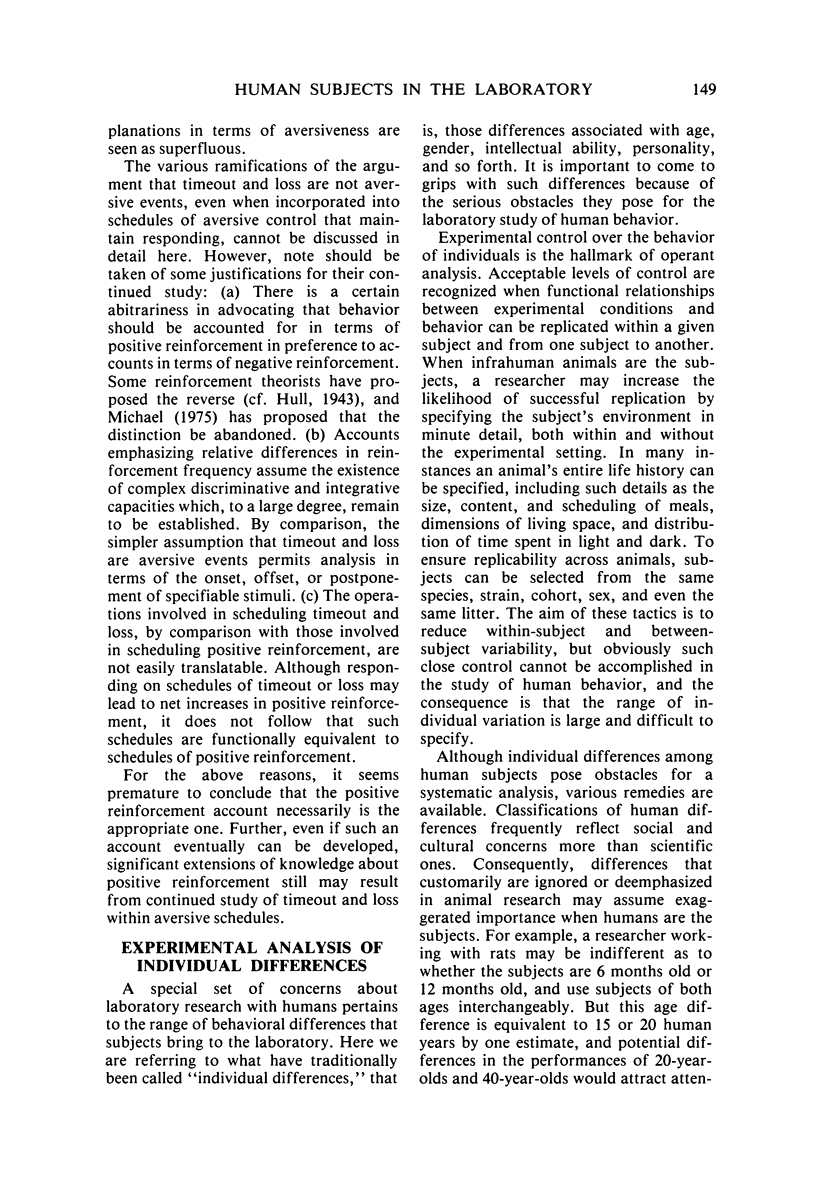
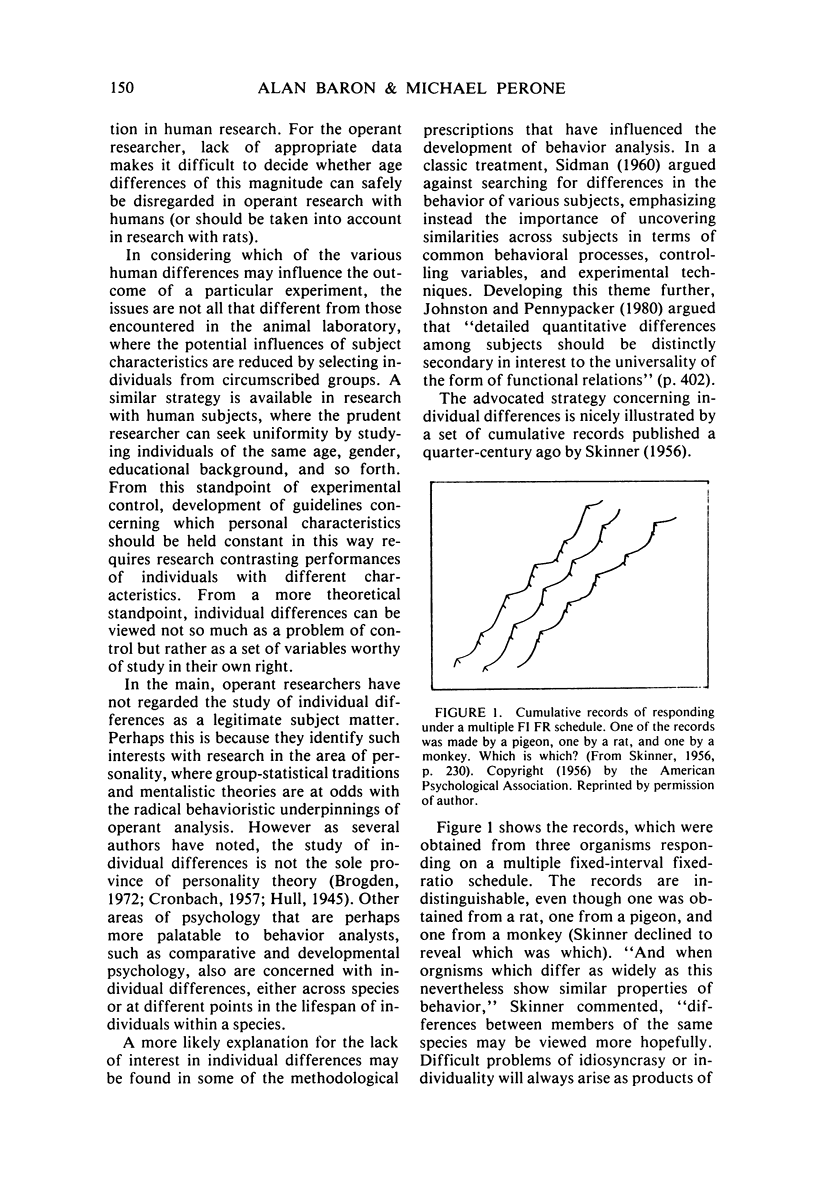
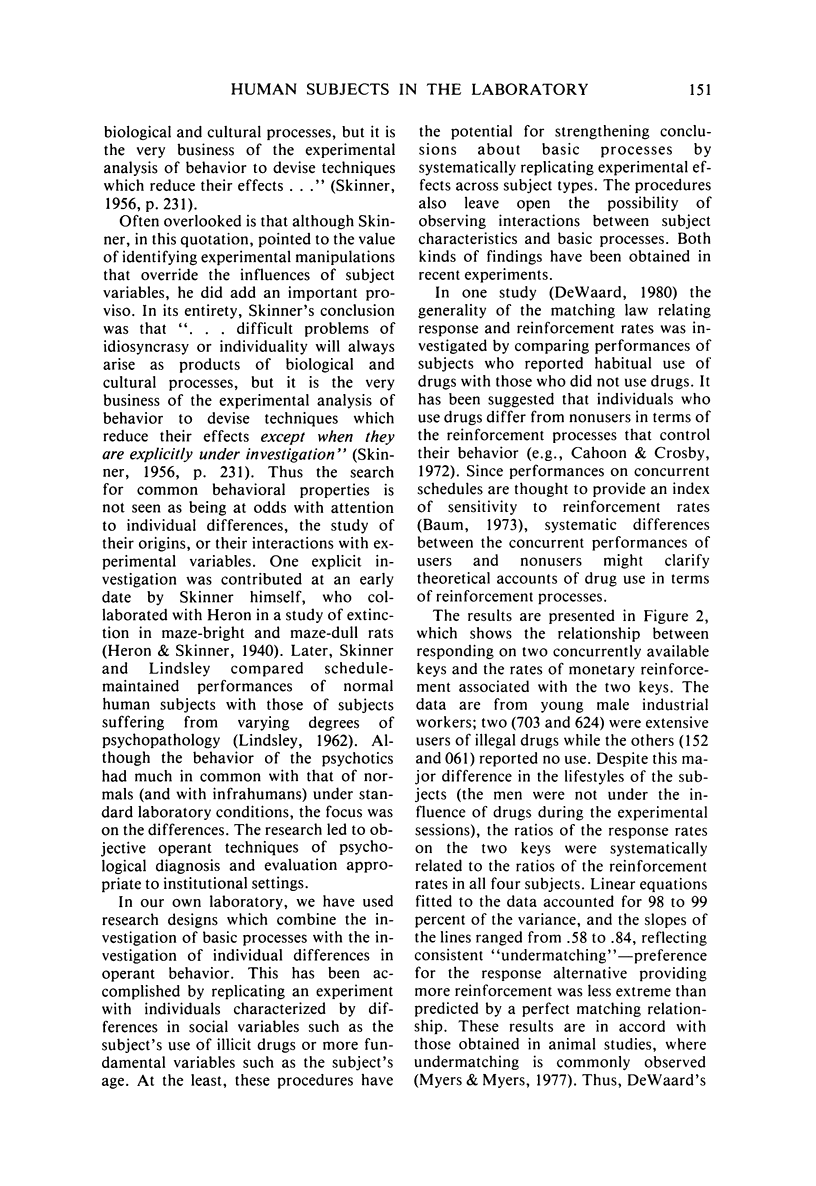
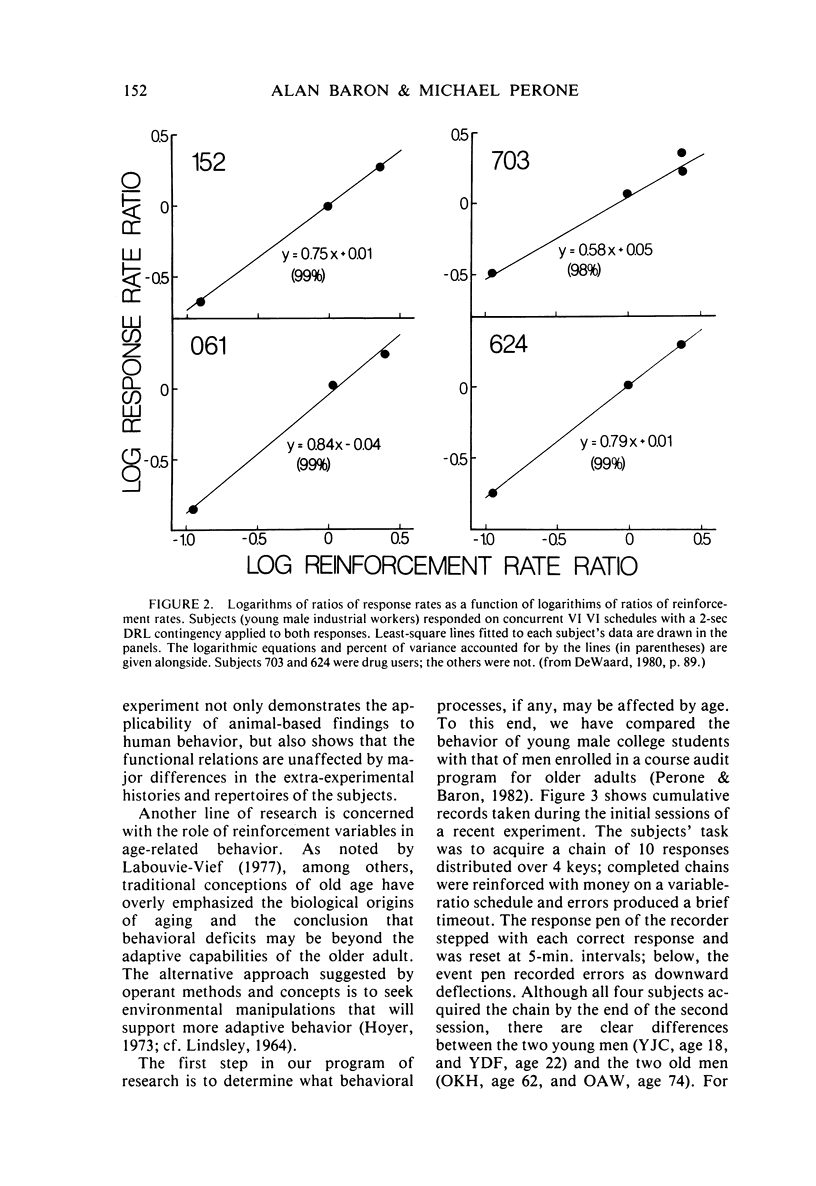
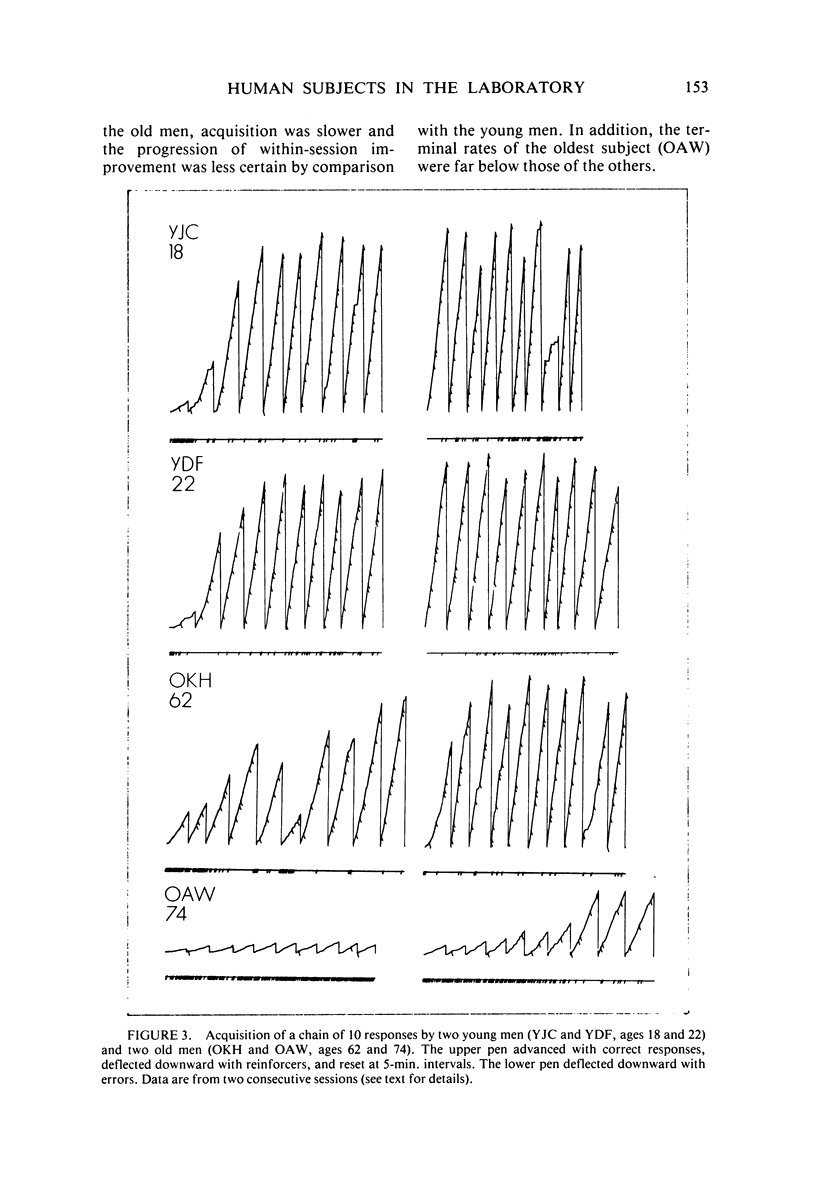
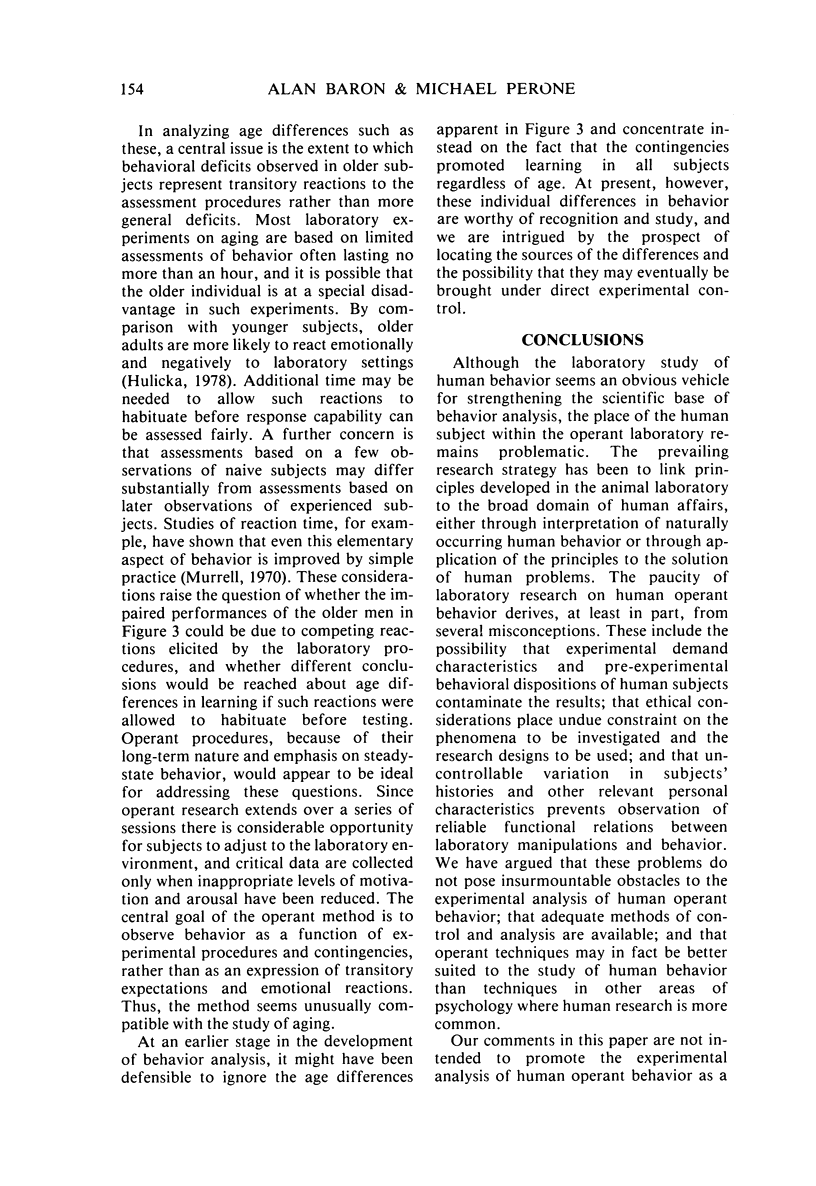
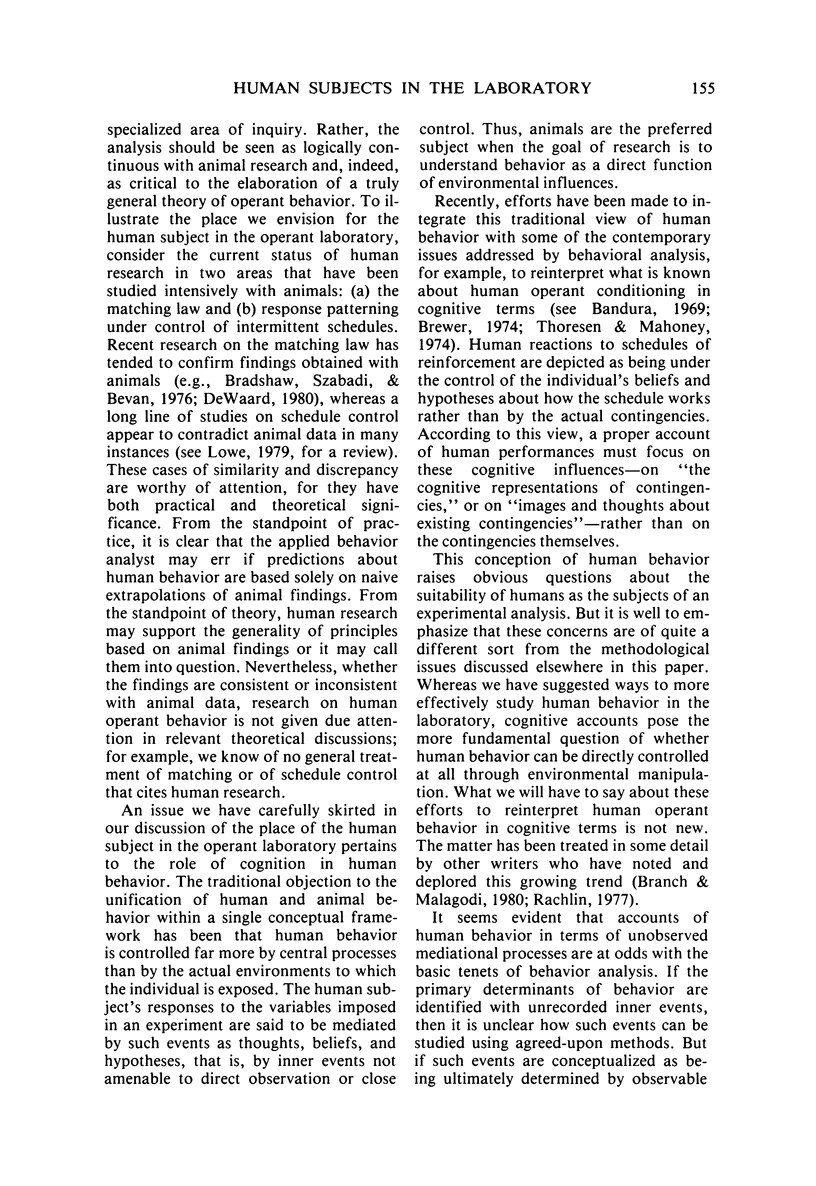
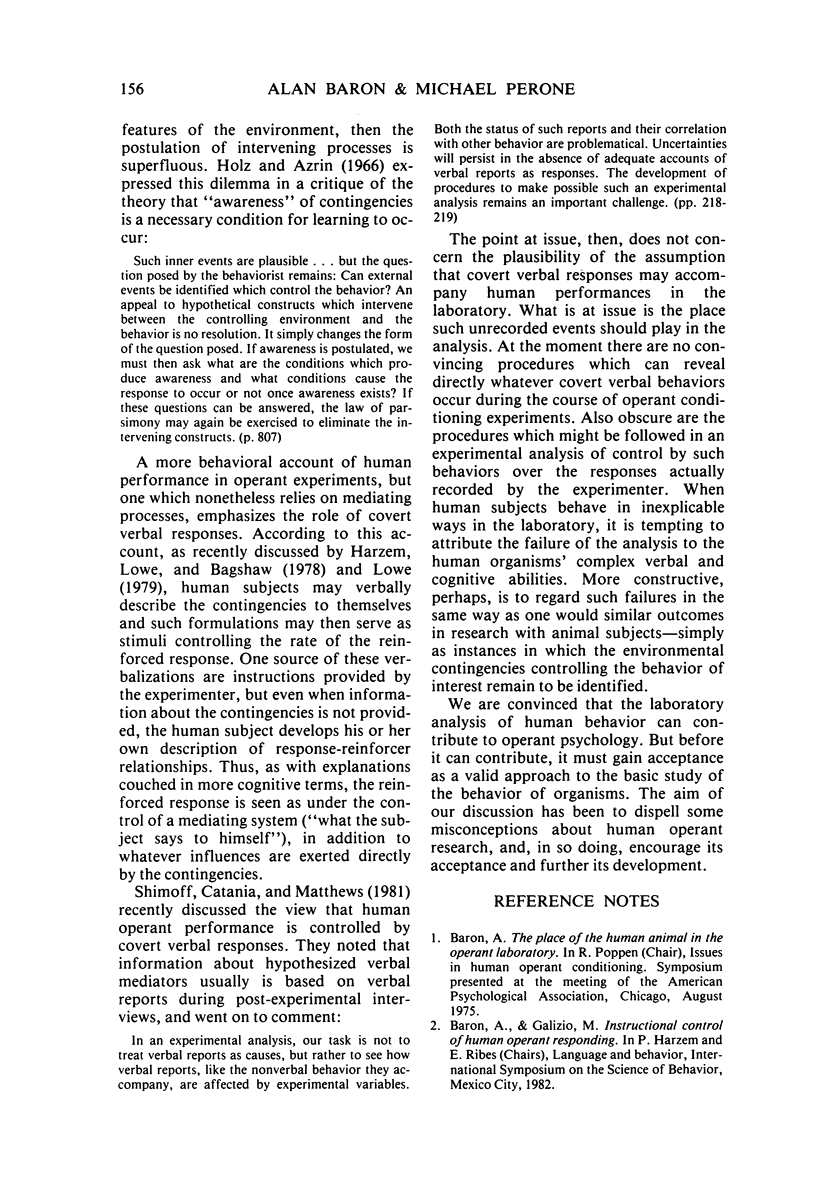
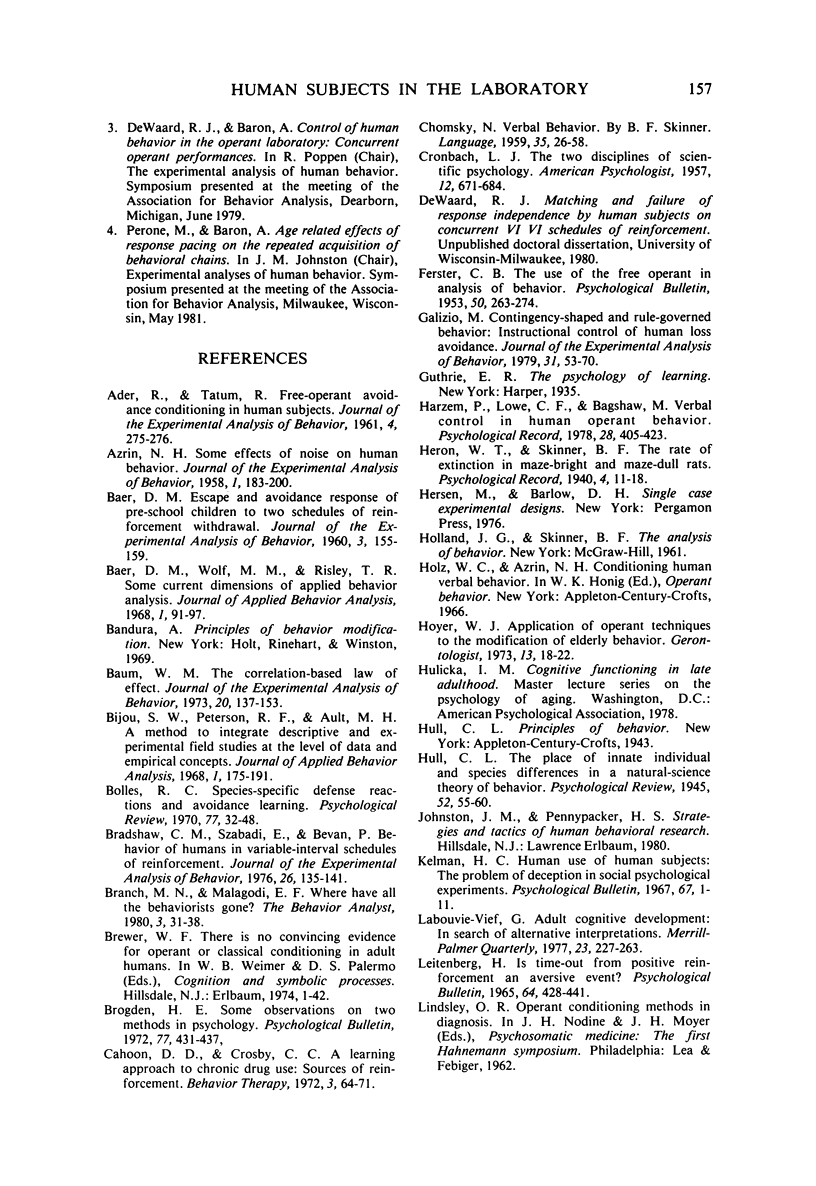
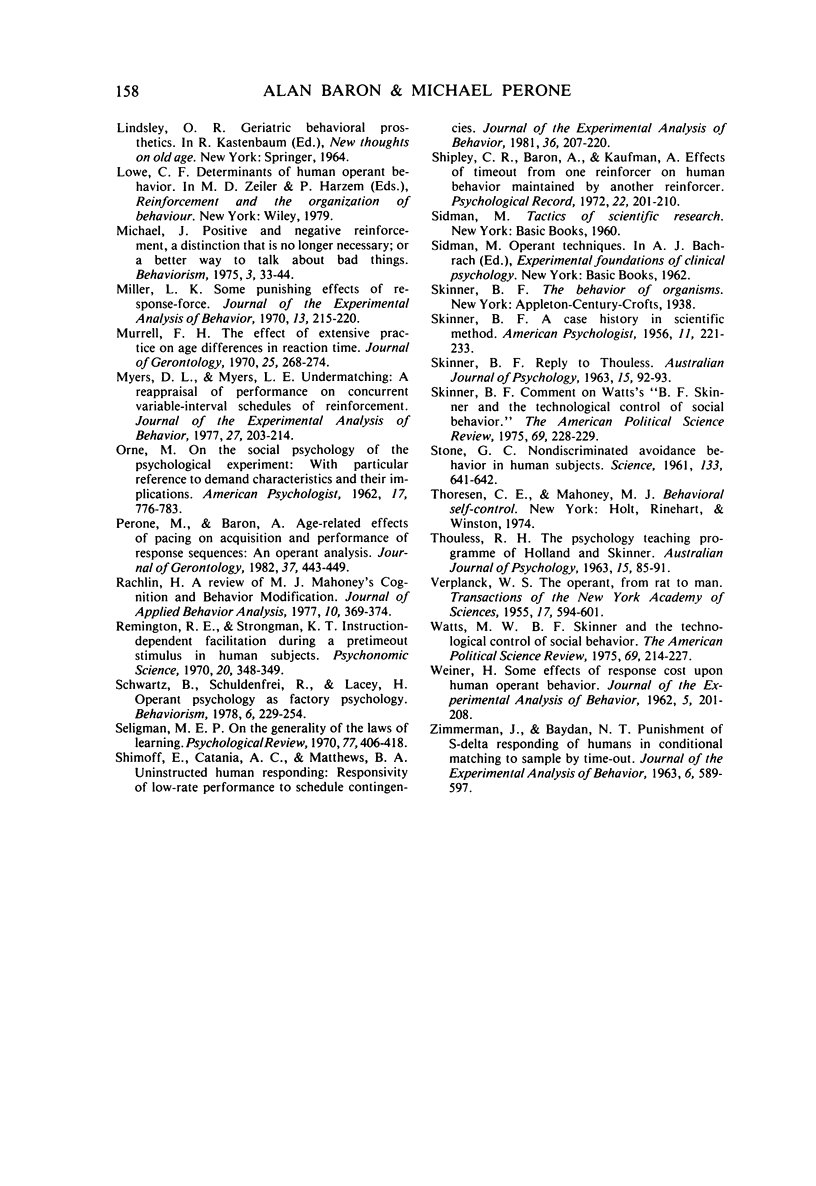
Selected References
These references are in PubMed. This may not be the complete list of references from this article.
- ADER R., TATUM R. Free-operant avoidance conditioning in human subjects. J Exp Anal Behav. 1961 Jul;4:275–276. doi: 10.1901/jeab.1961.4-275. [DOI] [PMC free article] [PubMed] [Google Scholar]
- Azrin N. H. Some Effects of Noise on Human Behavior. J Exp Anal Behav. 1958 Apr;1(2):183–200. doi: 10.1901/jeab.1958.1-183. [DOI] [PMC free article] [PubMed] [Google Scholar]
- BAER D. M. Escape and avoidance response of pre-school children to two schedules of reinforcement withdrawal. J Exp Anal Behav. 1960 Apr;3:155–159. doi: 10.1901/jeab.1960.3-155. [DOI] [PMC free article] [PubMed] [Google Scholar]
- Baer D. M., Wolf M. M., Risley T. R. Some current dimensions of applied behavior analysis. J Appl Behav Anal. 1968 Spring;1(1):91–97. doi: 10.1901/jaba.1968.1-91. [DOI] [PMC free article] [PubMed] [Google Scholar]
- Baum W. M. The correlation-based law of effect. J Exp Anal Behav. 1973 Jul;20(1):137–153. doi: 10.1901/jeab.1973.20-137. [DOI] [PMC free article] [PubMed] [Google Scholar]
- Bijou S. W., Peterson R. F., Ault M. H. A method to integrate descriptive and experimental field studies at the level of data and empirical concepts. J Appl Behav Anal. 1968 Summer;1(2):175–191. doi: 10.1901/jaba.1968.1-175. [DOI] [PMC free article] [PubMed] [Google Scholar]
- Bradshaw C. M., Szabadi E., Bevan P. Behavior of humans in variable-interval schedules of reinforcement. J Exp Anal Behav. 1976 Sep;26(2):135–141. doi: 10.1901/jeab.1976.26-135. [DOI] [PMC free article] [PubMed] [Google Scholar]
- Branch M. N., Malagodi E. F. Where have all the behaviorists gone? Behav Anal. 1980 Spring;3(1):31–38. doi: 10.1007/BF03392376. [DOI] [PMC free article] [PubMed] [Google Scholar]
- FERSTER C. B. The use of the free operant in the analysis of behavior. Psychol Bull. 1953 Jul;50(4):263–274. doi: 10.1037/h0055514. [DOI] [PubMed] [Google Scholar]
- Galizio M. Contingency-shaped and rule-governed behavior: instructional control of human loss avoidance. J Exp Anal Behav. 1979 Jan;31(1):53–70. doi: 10.1901/jeab.1979.31-53. [DOI] [PMC free article] [PubMed] [Google Scholar]
- Kelman H. C. Human use of human subjects: the problem of deception in social psychological experiments. Psychol Bull. 1967 Jan;67(1):1–11. doi: 10.1037/h0024072. [DOI] [PubMed] [Google Scholar]
- Leitenberg H. Is time-out from positive reinforcement an aversive event? A review of the experimental evidence. Psychol Bull. 1965 Dec;64(6):428–441. doi: 10.1037/h0022657. [DOI] [PubMed] [Google Scholar]
- Miller L. K. Some punishing effects of response-force. J Exp Anal Behav. 1970 Mar;13(2):215–220. doi: 10.1901/jeab.1970.13-215. [DOI] [PMC free article] [PubMed] [Google Scholar]
- Murrell F. H. The effect of extensive practice on age differences in reaction time. J Gerontol. 1970 Jul;25(3):268–274. doi: 10.1093/geronj/25.3.268. [DOI] [PubMed] [Google Scholar]
- Myers D. L., Myers L. E. Undermatching: a reappraisal of performance on concurrent variable-interval schedules of reinforcement. J Exp Anal Behav. 1977 Jan;27(1):203–214. doi: 10.1901/jeab.1977.27-203. [DOI] [PMC free article] [PubMed] [Google Scholar]
- doi: 10.1901/jaba.1977.10-369. [DOI] [PMC free article] [Google Scholar]
- Perone M., Baron A. Age-related effects of pacing on acquisition and performance of response sequences: an operant analysis. J Gerontol. 1982 Jul;37(4):443–449. doi: 10.1093/geronj/37.4.443. [DOI] [PubMed] [Google Scholar]
- Shimoff E., Catania A. C., Matthews B. A. Uninstructed human responding: Sensitivity of low-rate performance to schedule contingencies. J Exp Anal Behav. 1981 Sep;36(2):207–220. doi: 10.1901/jeab.1981.36-207. [DOI] [PMC free article] [PubMed] [Google Scholar]
- Stone G. C. Nondiscriminated Avoidance Behavior in Human Subjects. Science. 1961 Mar 3;133(3453):641–642. doi: 10.1126/science.133.3453.641. [DOI] [PubMed] [Google Scholar]
- WEINER H. Some effects of response cost upon human operant behavior. J Exp Anal Behav. 1962 Apr;5:201–208. doi: 10.1901/jeab.1962.5-201. [DOI] [PMC free article] [PubMed] [Google Scholar]
- ZIMMERMAN J., BAYDAN N. T. PUNISHMENT OF S-DELTA RESPONDING OF HUMANS IN CONDITIONAL MATCHING TO SAMPLE BY TIME-OUT. J Exp Anal Behav. 1963 Oct;6:589–597. doi: 10.1901/jeab.1963.6-589. [DOI] [PMC free article] [PubMed] [Google Scholar]


